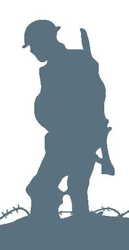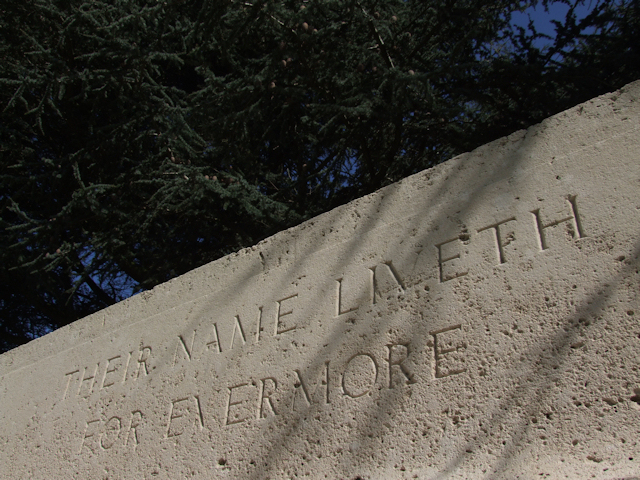Name
Sidney George (George) Roberts,
Conflict
First World War
Date of Death / Age
Rank, Service Number & Service Details
Hertfordshire Regiment
1st Bn.
'G' Coy.
Awards: Service Medals/Honour Awards
Cemetery/Memorial: Name/Reference/Country
Headstone Inscription
Not Researched
UK & Other Memorials
Pirton School Memorial
Biography
As explained in the biography for George Roberts, there were two George Roberts, both listed in the Parish Magazine of September 1915. The man recorded as enlisting during 1914, but after July, and who was serving in the 1st Hertfordshire Regiment is this man. The Parish Magazine also recorded that he had been wounded. Len Blackburn, Sidney George’s son-in-law, confirmed that Sidney George was commonly known as George.
George appears on the School War Memorial, confirming that he attended the school. Parish and census records confirm that he was baptised Sidney George and was born on November 21st 1893 to Charles and Isabel Reynolds (née Lake). He would have been twenty at the outbreak of war. Baptism records list three children: Alice Mary (b 1891), Sidney George (b 1893) and Rose (b 1896).
In 1911, George was seventeen and working as a farm labourer on one of the local farms, but when war came he was working as an undergroom in Wellbury for a Mrs Gosling.
Letters home from the Front reveal much about his experience; they describe the twenty-mile walk of the 1st Hertfordshire Regiment to get to the trenches, with the ‘First night billeted in a town, then slept in a barn’. Christmas Eve and Christmas Day were spent digging trenches. By Boxing Day, they were occupying them and only about 200 yards from the Germans. ‘We are all tired and want to sleep. What with the rattle of the big guns and having to keep awake it soon begins to play on us.’ ‘It seems as if everyone must get hit, with the shells bursting over our heads the whole time.’ ‘We have seen some sights since we have been out here, what with towns and villages that have been destroyed and people being turned out of their houses. We shall all be glad when it is over.’ And in another letter ‘On New Year’s Eve we could hear the Germans singing, as we were only about 200 yards from their trenches. Thank God we got through it once again. You will be pleased to know that all the Pirton chaps are quite well, and we still have some lead left for the Germans!’ On this occasion, they remained in the trenches until January 20th.
He was wounded sometime in May 1915 and sent a field card home to his parents, telling them that he had been wounded in the head and legs and was in the base hospital in France – the British Army did not issue helmets until late 1915. Initially, it was thought to be not too serious, but by the 27th his parents had received a letter to say that it was more serious than had first been thought, and that he had been returned to England and was now in Walsworth Hospital in London. The North Herts Mail was reporting and ended with its good wishes ‘We hope the brave young soldier will soon get convalescent.’ A later report revealed that he had been with Arthur Walker and Sidney Smith also of the same Regiment. Sidney was also wounded. Arthur escaped uninjured, but was killed in a similar incident in September 1916 along with John Parsell. By cruel coincidence, George was present at both and wounded in both. In the second incident he was returned to King George’s Hospital in Stanford Street London. One wonders how many other unreported near misses they had experienced.
Other newspaper cuttings from the village scrapbook provide more information. They confirm George was the son of Mr and Mrs Charles Roberts, who lived near Little Green. Cross-referencing this information with other articles recording the death of John Parsell suggest that the article is dated sometime around September 1916. This confirms that, in the second incident George was slightly wounded in the ear by a fragment of a shell and was later transferred to King George’s Hospital in London. This was almost certainly the same shell that killed John Parsell and Arthur Walker.
Perhaps because of his injuries he may have transferred regiments and duties, since, in the 1918 Absent Voters’ List he was recorded as Private 254547, Agricultural Corps, Labour Corps, with his home address given as Little Green.
Len Blackburn kindly provided the following information: “George was my father in law, he had married Annie Emily Carter in the late 1920s and lived in 24 Royal Oak Lane. He was a carpenter by trade, working for a film-maker in Welwyn Garden City and then for British Rail. He was also the Chairman of the Pirton branch of the British Legion and went to the annual Remembrance Service at the Royal Albert Hall up until about 1971.” George and his wife's ashes are interred in the Garden of Rest of St. Mary's Church. George died in 1980 and Emily in 1983.
The North Herts Mail of December 17th 1914 gives information for a Private T G Roberts (note T G not S G) serving in “G” Company of the Hertfordshire Territorials. A search of the parish and census records does not reveal any T or a T G Roberts, so it is probable that the T G is a misprint of the S G Roberts. This is supported by the fact that the content of the letter seems to fit with letters quoted above, and that T G and S G Roberts are both listed as in “G“ Company, 1st Hertfordshire Regiment.
In a letter to Mr Franklin, he wrote ‘We are not up in the firing line just now, but have been there. We can hear the guns where we are and want to get up there. The French relieved us (the) first time we went in the trenches. All the Pirton lads in 1st Herts. are quite well and happy.’
Acknowledgments
Text from the book ‘The Pride of Pirton’ by Jonty Wild, Tony French & Chris Ryan used with author's permission, Len Blackburn



